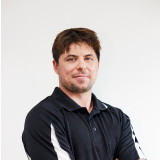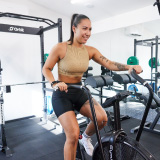As athletes if we are to separate ourselves from the pack the simple truth is that physical qualities such as strength, power and speed need to be developed year-round, In fact this is the standard in the era of modern sport science as you begin to push up to the higher levels. If we are to pursuit a career playing sport in the higher levels or even if we simply want to reach our highest personal potential as an athlete it makes sense to develop the same way. That is not to say that we perform workouts at a professional level standard and intensity but become accustomed to training in that format early.
But how do you squeeze it all in?
This is the greatest challenge for myself for a coach and where constant communication with the athlete is imperative. For higher level athletes they can have as much as 2-3 skills training sessions per week as well as games. This is where implementing high-low days can be a useful tool for example on a high day completing a high intensity-low muscle fatigue gym session in the morning and club skills/club session training in the afternoon. The following day after a big day of training (high day) the athlete will implement a low day. Ideally this could be a complete rest day or depending on the goals of the athlete and the stage of their development they could do a workout with low neural demand and low muscle fatigue such as aerobic work on the bike, mobility session or light skills drills. This prevents the athlete building too much fatigue during the week and the weekly split is organised so athletes are 100% fresh and ready to go for game day.
Training in-season the focus is taken from muscle hypertrophy (high volume high muscle damage) and shifted to high intensity low volume work such as strength and power development. Exercises such as compound strength lifts (low reps), Overcoming ISO’s and weighted jumps are perfect for developing strength and power in season as they cause low damage to muscle tissue. We can also hone in on any little niggles the athlete may have with mobility and rehab work, The second fantastic thing about an in-season program is it keeps an athlete on the track.
Strength is too important to neglect completely once the preseason period is over and an athlete who does that will have lost a lot of that hard-work put in over the summer by later on in the season. An in-season training program may not improve physical qualities at the same rate as the off season period however it will hold you well ahead of your opposition who has made the mistake of disregarding their gym work. By the time the season is over again an athlete who has kept training the whole way through will be miles ahead when the off-season period approaches again. This process is known as ‘stacking’ physical qualities year round.









